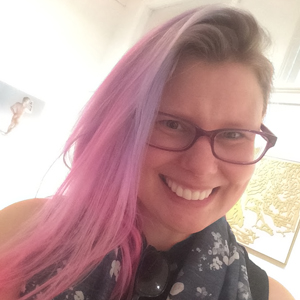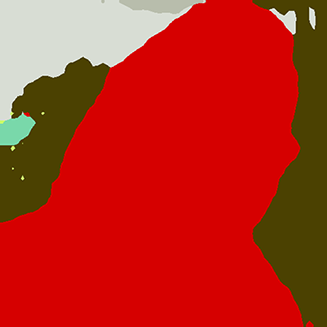Frankenstein's Telephone
‘Frankenstein’s Telephone’ is a conceptual artwork created using artificial intelligence to examine how computer vision expresses gender classifications. Each of the images in the sequence are snapshots of that document how various neural networks have generated an image based on a prompt phrase. The steps taken to create the sequence are as follows:
- Select an image caption from the Broadly Gender Spectrum Collection.
- Enter the caption into ATTN GAN, a generative adversarial network that creates an image based on the caption.
- The image generated by ATTN GAN is then uploaded to DeepLab, an artificial intelligence algorithm that segments and classifies parts of an image as people and types of objects.
- The resulting abstract segmented and classified image is then fed to SPADE-COCO, a generative adversarial network that generates a new image based on the segmented labeled image.
- The resulting image is then fed to im2txt, a neural image caption generator. The final screenshot is the desaturated image with the resulting caption.
- REPEAT using the resulting caption until the caption no longer references a person or people.
- Through this process, I want to consider how neural networks and machine vision deal with gender and how the design of these networks and technologies reflect the bias and perspective the humans who designed these artificial intelligence systems. All AI systems are trained using a datasets selected and curated by people and therefore reflect inherent bias. What is interesting is interrogating how the resulting AI responds to its training parameters and generates outputs that evolve and shift over time.
This work is an AI version of the game ‘telephone’ where a message is passed around a circle of players by whispering in a neighbour’s ear, who then passes on their version of what they heard. The resulting message is often humorously garbled. In ‘Frankenstein’s Telephone’, I am interested in the shifts pertaining to gender and personhood. The sequence of different AI systems reveals aspects of how AI classification works and, potentially, where bias occurs and which parts of the chain are weakest.
The red color in the segmentation assigned in DeepLab is ungendered. It simply stands for “person”. I believe that the simplicity of that classification category is what we should aspire to. As demonstrated in these works, however, some of these open source AI networks have been designed to ascribe gender. The discomfiting images of computer generated humanity calls to mind the story of Frankenstein’s monster, a narrative that many queer people, especially transgender people, identify with. The real monsters are the people behind the scenes that unconsciously perpetuate bias. The datasets used in these works are created by humans and are labeled by humans. The captions use gendered language written by humans and interpreted by machine. This is where the bias comes from, this is where the mistakes and misgendering occur. These machine generated conceptions of humanity, with their unexpected forms and eyes and mouths could be seen as modern monsters, but no less deserving of their label “person”.
J. Rosenbaum is a contemporary figurative artist working in 3D modeling, artificial intelligence and artificial intelligence and exploring the intersection of technology and art. Their most recent work has been in exploring the nature of Non Binary transness and their own genders and sexuality. In 2019 they are continuing their research into computer perceptions of gender with their PhD at RMIT.
Following a car accident that impaired Rosenbaum’s mobility they have turned their mind inwards exploring the nature of humanity, religion and gender through art. The human body has always been a source of fascination in Rosenbaum’s art with a focus on mythical and archaeological stories driving their progress. This fascination has continued with their Computer Generated works with a basis in classical art and history.
I respectfully acknowledge the Traditional Owners of the land that this work was developed on, being the Wurundjeri, Bunurong and Boon Wurrung, their spirits and Elders past, future and present. I also acknowledge that that sovereignty was never ceded and that these lands are aboriginal lands.



An AI Generated image of the artist from a selfie. The caption reads: 'a man in a suit and tie is smiling'.
Developed with RunwayML
Supported by the City of Melbourne COVID-19 Arts Grants
Copyright J. Rosenbaum 2020 - www.jrosenbaum.com.au
